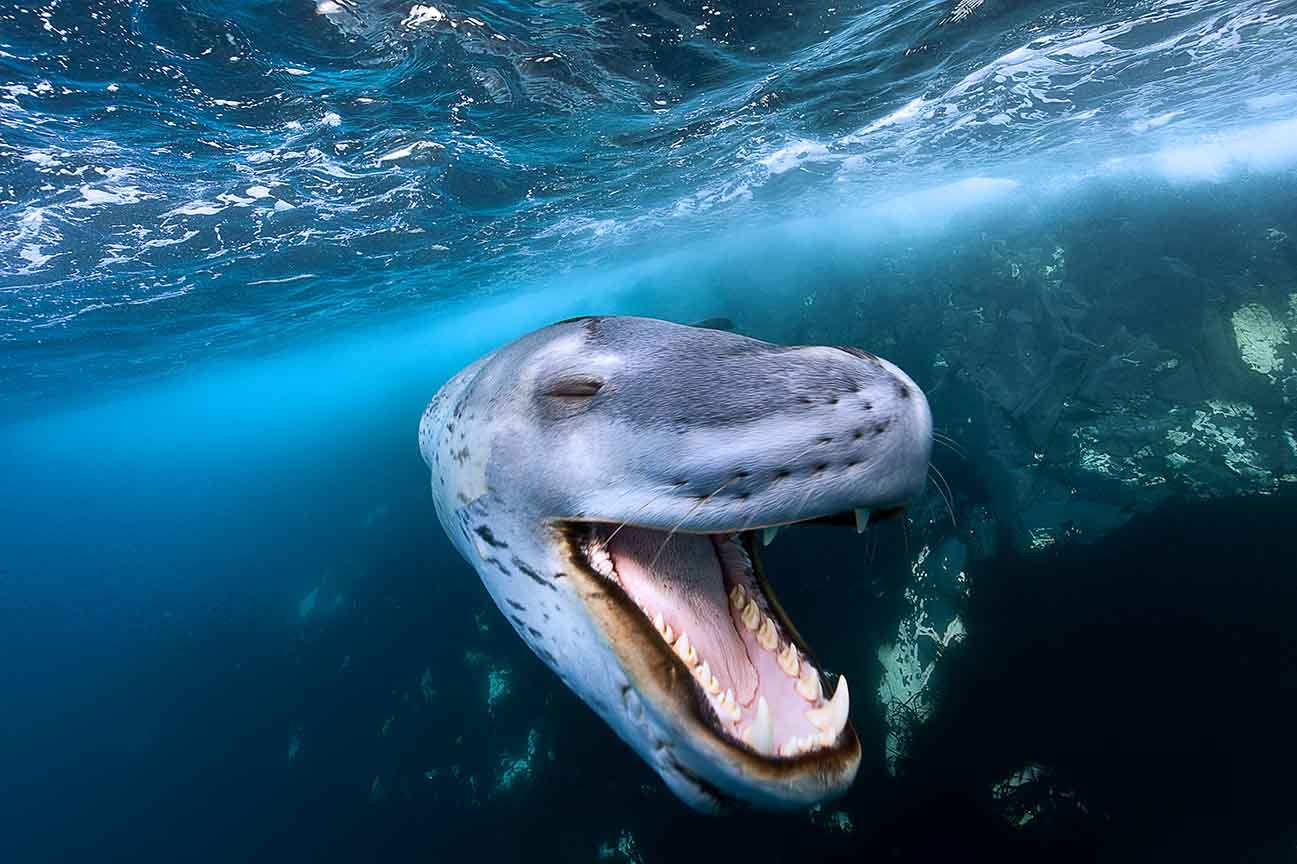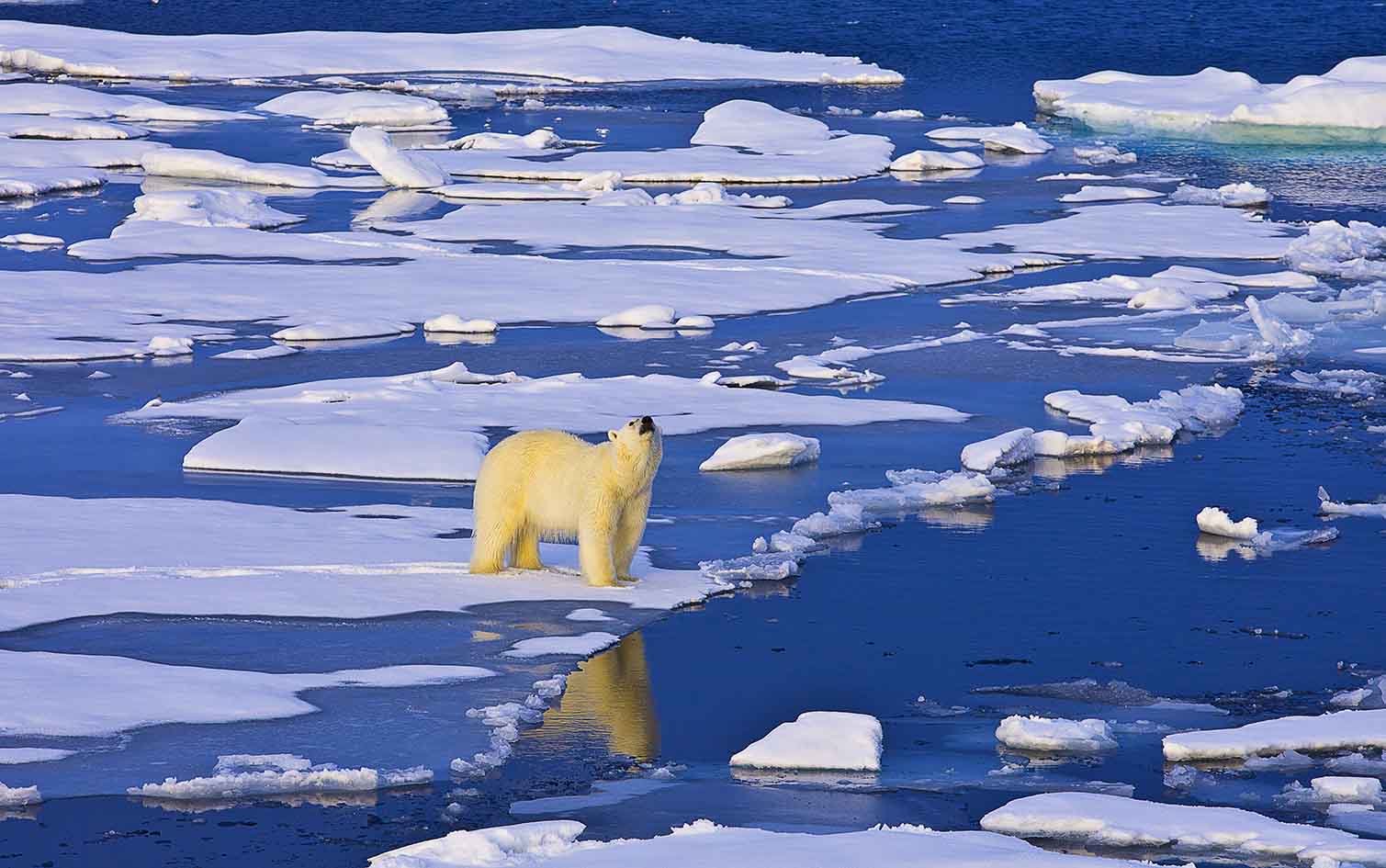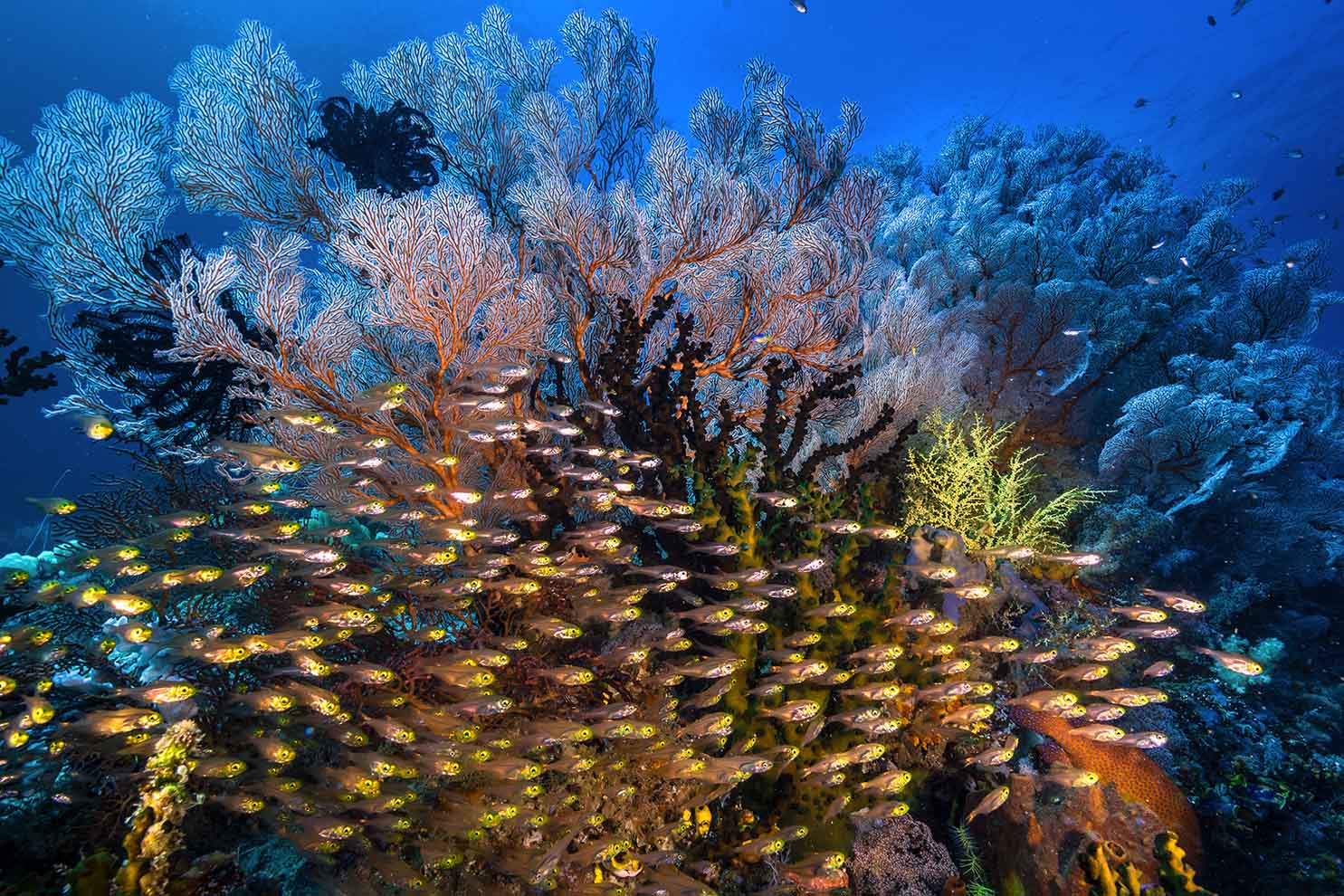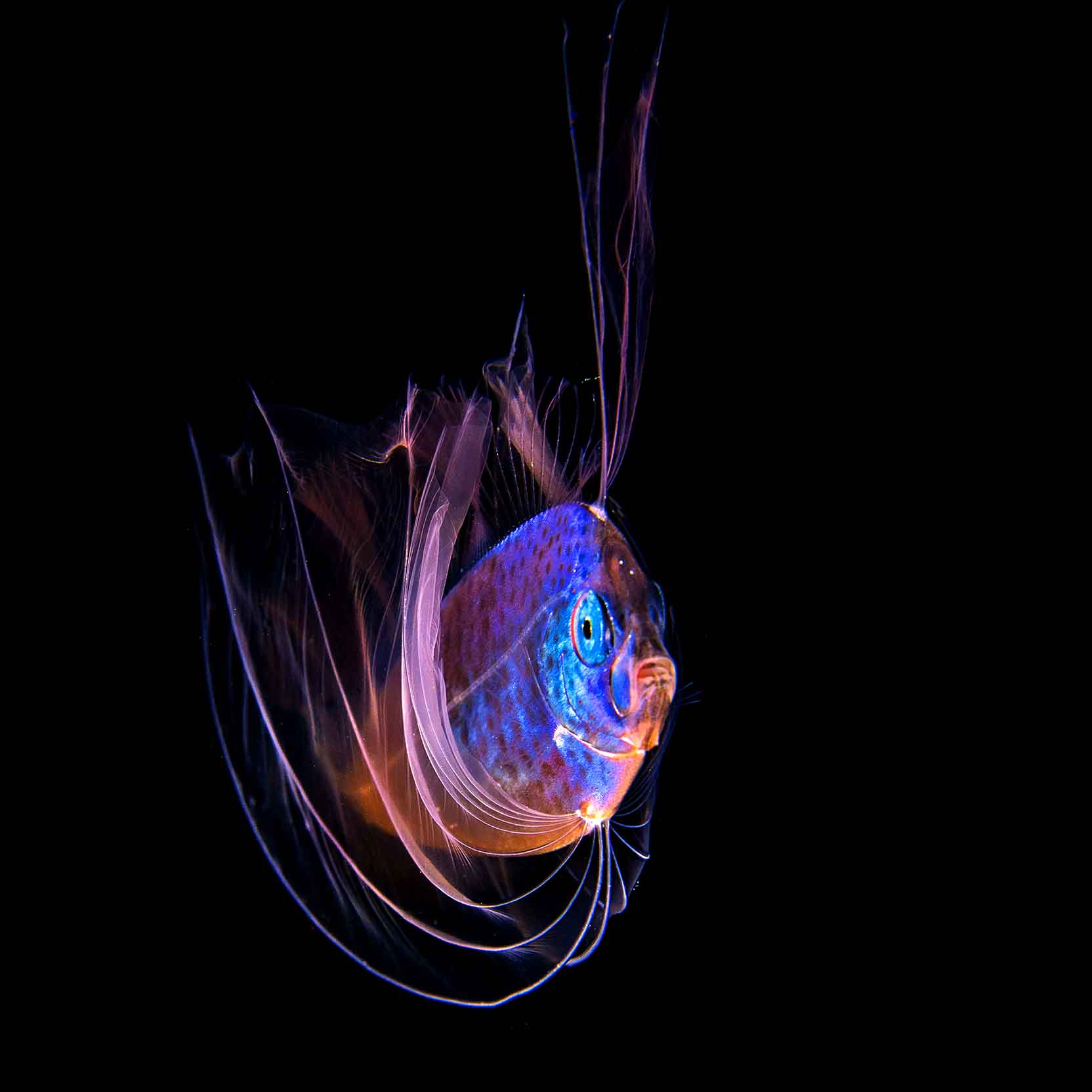Visitors to the Earth Observatory of Singapore (EOS) will be familiar with the exhibition of polar and tropical marine wildlife by some of the world’s leading photographers.
The driving force behind the ‘Elysium Epic Trilogy’ exhibition is Mr Michael Aw, the entrepreneurial underwater photographer who organised three expeditions to the Arctic, Antarctic, and Coral Triangle to document the species featured in this unique exhibition.

The locations of three disparate Elysium expeditions share one common feature – they are all in the front line of climate change. Of his experiences in the Antarctic, the Arctic, and the Coral Triangle, Michael set the scene: “It is humbling and challenging because we can see what we will lose and how much or how little we can do about it, or at all, to slow down the effect of climate change. It is a really fast-changing environment.”
Michael’s expedition team of scientists and artists travelled to the Antarctic in 2010. “The polar region is the climate engine of our planet so that was why I decided to go first to the Antarctic with a mission to document the place that Ernest Shackleton and his team would have seen when they were there, compared to what it is now”.
To document the threat that the diminishing Arctic ice shelf poses, Michael’s second expedition in 2015 took the team into the Svalbard region, across Greenland, and finishing in Iceland. As well as frequently seeing glacier calving, he and the team witnessed several polar bears that were “in trouble”.

The last bastion of coral reef in the world at Raja Ampat in the Coral Triangle was Michael’s choice for the project’s third expedition in 2018. There, as a baseline for the region, the Elysium expedition team documented the state of one of the world’s remaining pristine coral reefs. He explained, “It is more or less untouched because of the flow of water through that area from the Pacific to the Indian oceans. The Great Barrier Reef, Indian Ocean, Palau, and the Maldives have all been affected by the coral bleaching events over the last 20 years.”
During the course of the three expeditions, Michael witnessed “massive changes” in climate and ocean health. “You can see the change quite quickly every year,” he said.
As preparation for the Arctic expedition, he revisited Svalbard at the same time of the year and each year the temperature was the highest ever recorded. “On 25 July 2015, it was about 16 degrees Celsius and in 2019 on the same date, it was 18 degrees Celsius. A year later, it was a new high of 23 degrees Celsius at 80 degrees north.”
In Raja Ampat it is not only the increased number of warmer days that he has witnessed but also the acidic water, especially in the shallow mangrove areas.
Throughout his 30-year career as an underwater photographer Michael has witnessed the destructive impact of warming oceans on corals. What he terms “the foundation of reef life”, he has seen perish in front of his eyes.

Coral bleaching is the marine conservation issue that concerns him the most. “When you lose the coral, you lose the fish and everything else that goes along with it. It is so vulnerable to warming water.” Corals are fragile, especially in the shallow reef. “What you see one week as healthy, the next week they are all bleached. A few weeks later, they are all covered in algae and black.”
“We are witness to it again and again.”
Experiencing this would leave anyone feeling powerless. “You feel so small and weak when you see it happening. What can the average person do to slow down the effect of climate change?” Yet Michael’s response is to use his work from the expeditions to celebrate the habitats and species that remain, “So we should focus on those that are alive and contribute to them so that they stay alive.”
“What we have collected is a document of the state of that environment where we shot it. We hope that in 50 years what we have in the volumes of the books we put together remains.”
The work involved in realising this ambition was monumental – each expedition would take two years of preparation, including reconnaissance missions to each location. This included four trips to the Antarctic, three trips to the Arctic, and 10 trips to Raja Ampat. Each trip involved a multidisciplinary team of scientists, photographers, videographers, artists, and musicians.

“The challenge was avoiding duplication of the material, especially on the first two trips because we're all on the same ship together going to the same places. The third trip was a bit easier because we were able to deploy three ships going on different routes. Each ship had its own coral team, fish team, and plastic and microplastic research team.”
As a result, the expedition to the Coral Triangle was able to conduct a lot more scientific research than the two polar region expeditions. Michael explained, “In a cold environment it’s just harder to work, but in a warm environment it is easier and safer.”
The conditions of the Coral Triangle expedition also allowed for night dives and open water exploration. “This was probably the first time it has been done for an expedition of this nature and we have documented animals when they perform the vertical migration in the evening.”
The team captured some unique photographs of ribbonfish, a species of deep-water fish. They managed to shoot some of the juvenile ribbon fish coming up into the relatively shallow water, possibly the first time it’s been seen in Indonesian waters, Michael said.

All the years of planning and preparation, the tens of thousands of kilometres travelled, the thousands of photographs taken and the extremes temperatures endured culminated in the creative masterpiece that is the ‘Elysium Epic Trilogy’.
The Exhibition brings together the very best of the pictures taken on the three expeditions. Its launch in China in 2019 brought the natural heritage of the three regions on the front line of climate change to the people from the biggest economy in the world. The exhibition reached the masses in the cities of Beijing, Shanghai, and Chengdu. In the same year, the exhibition also opened in Singapore and Sydney.
“EOS gave us a chance to bring these pictures and stories to the next generation of scientists, the next generation of conservationists. We have to bring our stories to the next generation. That's why it's a privilege to be able to work with EOS in Singapore and to get our message out to the region.”